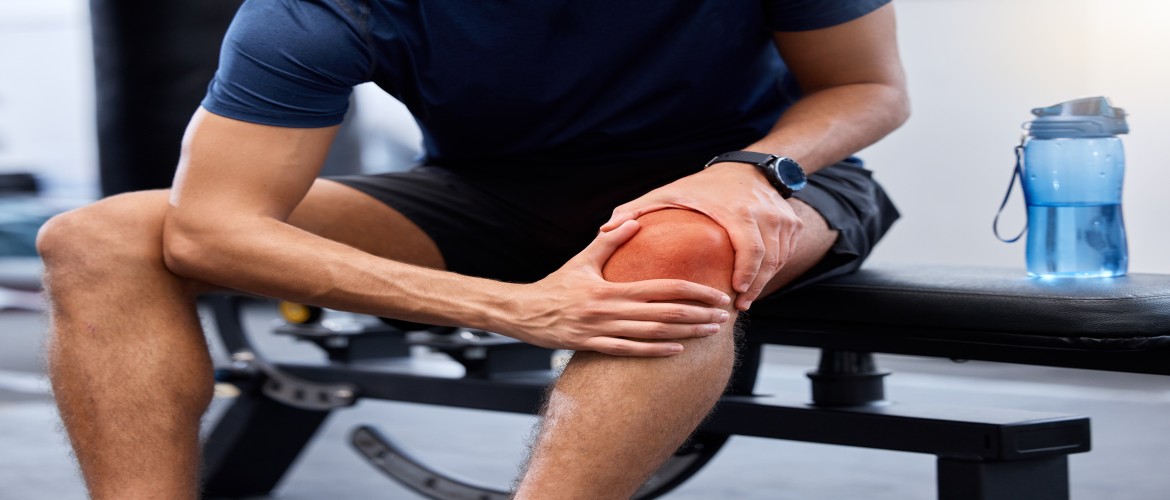Muscle soreness is unavoidable if the goal is to develop muscle and strength.
Is there anything you can do to ease the soreness? Or are aching muscles simply a matter of enduring discomfort?
Delayed onset muscle soreness (DOMS) is a fully natural process that signifies that your muscles are growing stronger — so there’s no danger in simply riding it out. However, this can be annoying and interfere with your day-to-day schedule. Fortunately, Thankfully, there are a few things you can do to make yourself feel better.
Strains, sprains and spasms can be caused by a variety of factors including:
1. Improper posture
2. Using muscles, ligaments or joints for actions for which they are neither conditioned nor capable.
3. Excessive or incorrect lifting
4. Unusual movements such as raising or twisting too quickly
5. Excessively demanding physical activities
Managing delayed onset muscle soreness after a workout. It is very common to have sore muscles or muscle pain after joining a gym or an intense workout, especially if you are increasing the intensity of your workout or beginning a new sport altogether. Tiny injuries or tears in the muscle fiber and connective tissue generate delayed muscular aches and pain.
How long will muscle pain last?
Sore muscles after a strenuous workout normally go away after 24 to 48 hours of rest. However, if the muscular aches persist or worsen after a few days of rest, it could indicate that you have suffered a major muscle injury. Consult a doctor if your muscle discomfort is accompanied by difficulty breathing, a high fever, muscle weakness, or a stiff neck.
Tips to relieve muscle pain and soreness
1. Use an ice pack
If the injury is severe, or if the muscle or joint area is swollen, wrap an ice pack in a thin towel and apply it on the aching muscles for about 10 minutes. Apply a heat pack for 10 minutes to stimulate blood circulation if there is no swelling and the muscles are only sore from the workout.
2. Try regular massages
DOMS is defined as an increasing sensation of discomfort, pain, and stiffness in muscle activity. Massage aids in the prevention and treatment of DOMS symptoms. It aids in the removal of lactic acid and other waste materials created by exercise prior to the onset of DOMS symptoms. It also alleviates DOMS symptoms by relieving pain and stiffness. Massage reduces tightness by improving blood flow, restoring normal movement and flexibility. A trigger-point or sports massage can help relax and relieve aching muscles.
3. Perform mild exercises (such as walking, swimming)
Do not fully stop exercising. The fact that you are sore after an exercise indicates that your muscles have been stretched and are gradually becoming stronger. You can speed up the clearance of lactic acid buildup by activating your muscles with light activity.
4. Gradually increase the number of eccentric exercises
Eccentric contractions occur when your muscles stretch under tension. It can also include walking or jogging downhill. You should gradually increase the intensity instead of pacing up abruptly.
5. Take a warm bath
A warm bath can help relieve stiff muscles and increase blood circulation, resulting in temporary alleviation.
6. Get your feet moving
Moving your muscles, believe it or not, is one of the best ways to alleviate muscular discomfort. This can be accomplished through light cardio or active recuperation, such as stretching, foam rolling or yoga.
7. Make sure you warm up first
Making sure that your muscles are prepared for action before you challenge them, is a vital aspect of safeguarding them. Allow several minutes of warm-up time before each workout session.
8. Begin a new exercise program gradually
Giving your muscles the time to adjust can help reduce the degree of pain. When beginning a new workout regimen or increasing the intensity, make sure to do so gradually over several days or weeks.
9. Soak in a saltwater bath
Soaking in warm water with Epsom salts might help you relax and ease the pain.
10. Take an analgesic
This will not speed up the muscle-healing process, but it will help you cope with the discomfort.
11. Make time to rest
If you don’t give your muscles enough time to rest (and repair), they will get overused, resulting in more acute soreness. Be sure to schedule rest days that focus on active recuperation. Remember that genuine rest (sleep) and hydration are also important for healing.
12. Try a split-day schedule
If you enjoy working out every day, consider dividing your sessions by muscle group. For example, legs one day and arms the next. This will help guarantee that each muscle group has ample time to recuperate before being trained again.
How to know that it’s time to visit a doctor
If your soreness lasts longer than three days and is accompanied by intense pain, try limiting your range of motion. An impaired gait may be more than just muscle soreness and should be evaluated by an orthopaedic.
Consumption of anti-inflammatory over-the-counter drugs.
Use topical creams or gels with anti-irritants to alleviate discomfort and speed up recovery. Topical analgesics can also be used to treat acute musculoskeletal pain. If you have chronic neck discomfort or a painful shoulder muscle, you may benefit from applying analgesic gel or spray. Omnigel Pain Spray is one such solution that relieves various types of pain. Use Omnigel Pain Spray up to 3-4 times per day for best results. You can also consult your doctor and utilise it as directed by them.
Back and body discomfort can be decreased or avoided by consuming a healthy diet, exercising regularly and strengthening muscle flexibility and strength through physical conditioning. Walking and swimming, for example, are low-impact physical activities that can help reduce body pain by building strength, flexibility, and endurance.

